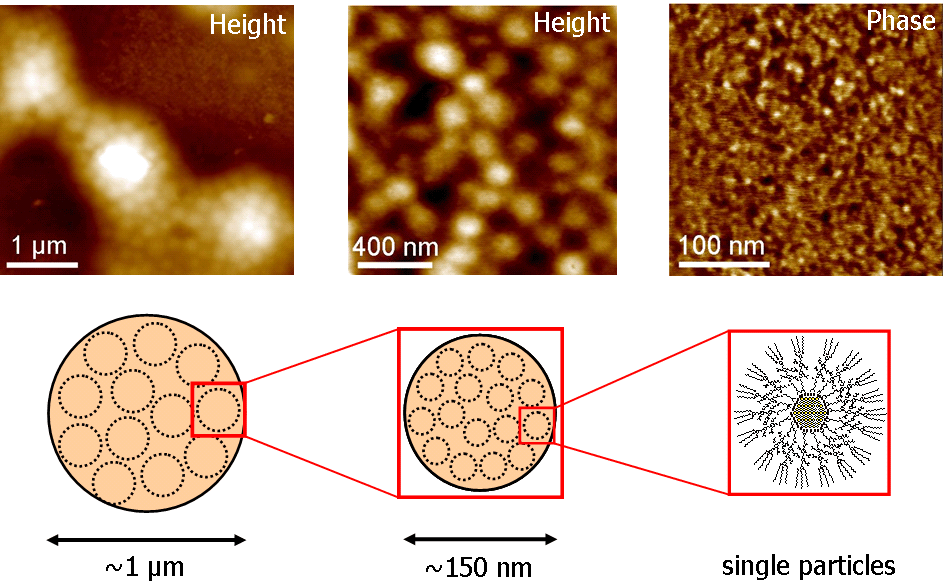Nanoparticles
A nanoparticle, also known as nanopowder, nanocluster and nanocrystal, is a tiny particle with measurement of less than 100 nanometers.
Nanoparticles are useful in a variety of applications, especially in the biomedical field. Examples include water purification, drug delivery, and detecting cancerous cells. Scientists have concluded that nanoparticles promise solutions to many problems. Explore this page to learn about nanoparticles. (1)

(Image 6)

(Image 1)

Nanoparticles can be derived from gold (Image 3)

(Image 6)
Watch the videos below to learn how nanoparticles can help purify water and treat cancer!
Nanoparticles have been, or currently being used in the following applications:-
-
Nanopores: usually 20 nm in diameter
-
aid the movement of oxygen, glucose and insulin in and out of cells
-
help reduce the risk of infection in diabetic patients
-
-
Dendrimers: "tree-shaped synthetic [nanostructured] materials"
-
Therpeutic applications: can inject DNA into cells "without triggering an immune system response" (3, 4)
-
In a recent experiment done by Houston Methodist researchers, it has been found that nanoparticles have the ability to directly target
 and destroy blood clots "100 to 1,000" times faster than the previously used "clot-busting technique". The nanoparticles not only gave the drug more time to do its job, but also enabled the scientists to use less of it, which reduced the threat of homorrhage.
and destroy blood clots "100 to 1,000" times faster than the previously used "clot-busting technique". The nanoparticles not only gave the drug more time to do its job, but also enabled the scientists to use less of it, which reduced the threat of homorrhage.
To access information about this research, CLICK HERE. (2)
(Video 1)
(Citations: 1, 2, 3, 4, Image1, 2, Video 1, 2)
Gold Nanoparticles
(Image 2)

Gold has so many unique properties that scientists have begun to use it for biomedical purposes. Gold, particularly, is the perfect metal to use because unlike other metals, it always remains unoxidized, even at nanoscale, causing it create clear contrast in optical images. To learn about the properties of gold and how they can be useful in different fields, watch the video below. (5)
Gold Nanoparticles can detect cancer at an early-stage. Scientists at the University to Missouri-Columbia found that gold nanoparticles could successfully detect lung cancer in a pig. Because the nanoparticles can show great contrast in images, they served as a "contrast medium for lung imaging". Based on this study and research, nanoparticles promise to improve detection of cancerous cells. (5)


Angiogenesis, a process in which new blood vessels form, is the "first step of tumor growth". New blood vessels have an extremely small size, making it very difficult to target using standard methods. However, because nanoparticles are very tiny, they can be used as a tool to depict angiogenesis and stop it's growth. Additionally, gold nanorods can offer another useful advantage: 3D-Imaging. Scientists believe that gold nanorods are "ideal for biological imaging as water and biological molecules have relatively low absorption in the range". (5)